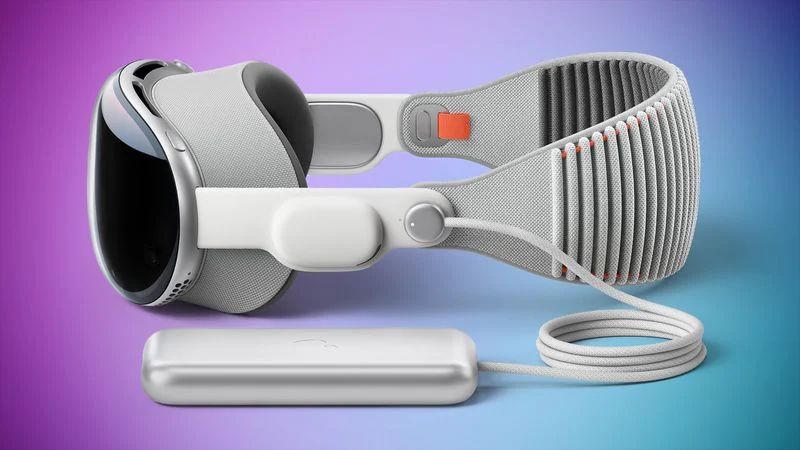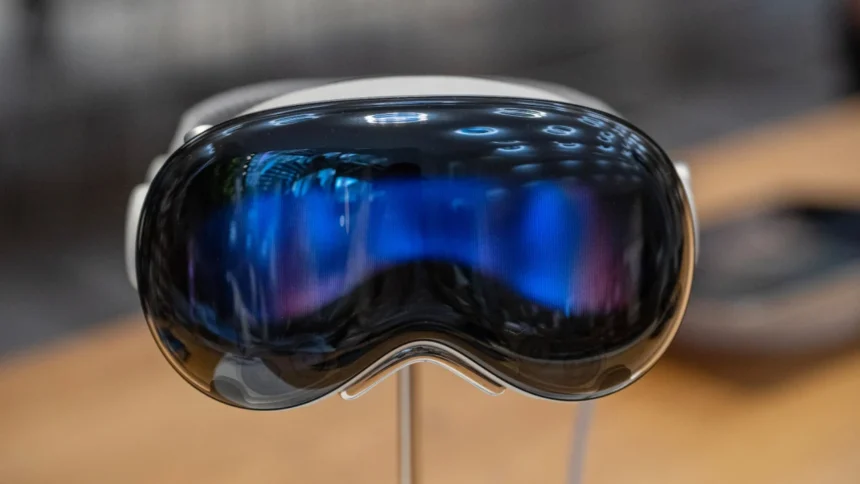The current Vision Pro isn’t doing too great, though.
Despite facing a lukewarm reception, Apple hasn’t lost hope in its Vision Pro mixed reality headset. This high-tech, high-price device may not be flying off the shelves at its $3,499 price tag, but Apple is already at work on a new version that could change the game.
Renowned Apple analyst Ming-Chi Kuo recently reported that the tech giant plans to launch an upgraded Vision Pro model in 2025, this time with the anticipated M5 chip. This new, more powerful processor could bring an even smoother, more immersive experience, cementing Apple’s commitment to high-end, high-performance mixed reality devices. But, if you were holding out for a more affordable option, don’t get your hopes up just yet. According to Kuo, Apple has pushed the production timeline for a rumored budget-friendly Vision Pro to 2027 or later.
What We Know About the Vision Pro M5 Model So Far
Apple’s current Vision Pro debuted at the Worldwide Developers Conference (WWDC) in June 2023, where it dazzled with its sleek design and technical prowess. However, initial reactions indicate that it’s struggling to find a solid user base. The Vision Pro’s current A12 Bionic chip does well, but it seems Apple wants to take performance even further with the M5 upgrade.

Kuo reports that in 2025, the Vision Pro lineup will feature only this high-end model with the M5 chip, and we may see it debut at another WWDC. While no concrete specs are available yet, we can expect improved processing power, possibly extended battery life, and more fluid interactivity—all key elements for Apple to win over mixed reality enthusiasts.
Why Apple’s Holding Off on a Cheaper Vision Pro
Many Apple fans and tech enthusiasts have hoped that a more accessible version of the Vision Pro might bring it within reach of the average consumer. However, Kuo suggests Apple’s decision to delay production of a cheaper Vision Pro model until after 2027 is more than a simple pricing issue.
According to Kuo, the primary hurdle is a lack of “successful use cases” for the Vision Pro. Simply put, Apple is still working to demonstrate exactly why people should buy its mixed reality headset. High-end features and impressive technology only go so far without a clear, compelling reason to own the device. This gap in clear use cases makes the Vision Pro’s luxury price tag an even bigger barrier. Kuo points out that, despite Apple’s “affordable” offerings in other lines, Vision Pro’s pricing remains high, especially compared to competitors.
Will the M5 Vision Pro Justify the Price?
So, what could the M5 chip bring to the Vision Pro to justify its premium price? The new chip could make it faster and more capable, potentially expanding the Vision Pro’s range of applications. Imagine ultra-high-resolution displays, enhanced AR/VR experiences, and more responsive interactions—all at a level that’s hard for competitors to match. Apple may be betting on the M5 chip’s power to make the Vision Pro an indispensable tool in professional, educational, and creative spaces.
However, for most consumers, the Vision Pro’s price will remain out of reach if Apple doesn’t establish solid, everyday use cases. Enhanced tech specs alone might not convince someone to invest thousands in a mixed reality headset without a clear understanding of how it’ll fit into their daily life.
Apple’s Vision for the Future: From Headsets to Smart Glasses?
While Apple’s current focus seems to be on advancing the Vision Pro, Bloomberg’s Mark Gurman notes that the company is “seriously considering” a wearable, smart glasses-style device that could be powered by an iPhone. This alternative might sidestep some of the issues faced by the Vision Pro by creating a lighter, more wearable device with simpler functions, making it easier to use and potentially more affordable.
For now, though, Apple is betting that the Vision Pro—with an upgraded chip and refined experience—could become the go-to device for mixed reality enthusiasts and professionals. With powerful hardware, premium design, and a potential for new use cases, the Vision Pro’s future may be brighter than its early struggles suggest.
If you’re among those who can afford the Vision Pro’s premium, stay tuned for an announcement at WWDC 2025. For everyone else, the wait continues—Apple’s Vision Pro might only be a part of a broader vision for mixed reality.










